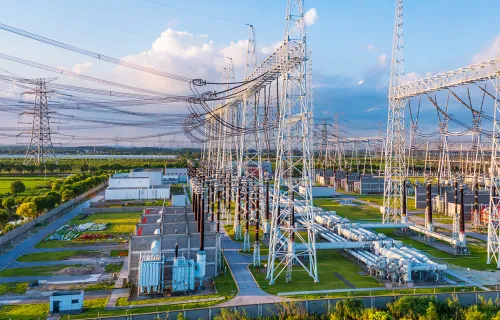As climate change intensifies, extreme global weather events regularly remind us of what a complex, powerful and fragile natural ecosystem we all share.
Yet despite nature’s awe-inspiring power and priceless value, the natural world can’t invest in its own conservation and restoration. With so much at stake, it’s vital we maximise every tool we have in the race to strike a sustainable balance with nature.
And that’s where the natural world offers a powerful, infinite resource to help us tackle climate change – data.
Understanding nature through data
We’ve been sizing up our world for centuries, measuring and recording various phenomena to better understand how the natural world ‘works’. The potential of this data is almost infinite, and technological advances over the last few decades have enabled an exponential increase in the amount, detail and accuracy of the information we’re able to generate. Thanks to digitalisation, we can also record, store and process this data more effectively, and it’s even helping us to unlock previously inaccessible historical data. Combined, these past and present datasets give us more accurate and wide-ranging insights into our changing natural world than ever before.
Data is only useful when it’s useable
But data alone isn’t a silver bullet for sustainability. Vast amounts of data can risk overwhelming decision-making processes, making it difficult to isolate the most relevant information and trends. Curating and managing the data we have (and are constantly generating) must be prioritised so it can be federated, freed from silos, standardised and made useable across different agencies and disciplines. Leveraging digital technology will help us to achieve actionable data and, once data’s more widely useable and available, experts can combine disparate datasets to uncover deeper and more actionable insights. For example, they can take data on how weather patterns affect coral growth and combine it with other datasets to understand how coral growth impacts surrounding ecosystems.
Using AI to create a clear path to sustainability
After tackling data access and useability, the next step is to bring Artificial Intelligence (AI) and Machine Learning into the digitalisation mix, leveraging these to unlock even greater sustainability potential.
Advances in AI and Machine Learning mean we’ll soon be able to model natural processes - without needing to fully model the underlying physical, chemical, and biological processes involved. Even the most complex ecological systems, like the marine environment, will be able to be better modelled and more accurately forecast to support more meaningful, evidence-based sustainability decisions by governments, industries and other influential bodies.
Furthermore, by generating better models and forecasts from environmental data, we’ll be able to better inform policy development, allowing the full impacts of human activity to be predicted and harms minimised. For example, converting rainforest to agricultural land is not only inefficient and destructive, but also requires massive inputs of fertilizers which wash into rivers and seas, eventually creating huge marine dead zones and major losses in biodiversity. Understanding these multi-system interactions and holistically modelling the consequences of human impact, require a combination of data sources and modelling which is only now becoming available.
Spending nature’s data currency wisely
Exploiting Big Data capabilities will take these possibilities even further – breaking down the boundaries between industrial and governmental data to smooth the path of sustainable change and ensure its benefits are tangible for everyone. Interfacing the short- and long-term impact of sustainability initiatives with insurance modelling, for example, can significantly drive down insurance premiums – creating an immediate financial benefit and helping to make the economic case for sustainability initiatives by demonstrating how they can effectively ‘pay for themselves’.
Although nature can’t self-fund its own preservation, its data can become its currency – funding a holistic, evidence-based approach to preserving our natural environment that’s accessible to all stakeholders around the world.
Taking a holistic approach to data
At CGI, we have a strong heritage as a systems integrator working on a global scale. We work across government, industry and academia to standardise data, increase interoperability and break down data silos - bringing data sets and systems together to create more holistic insights and support today’s modelling needs.
The tools and platforms we provide enable our clients to collate and manage their data more effectively, for example, our work alongside the European Space Agency (ESA), the UK Space Agency (UKSA) and others delivers secure, mission-critical systems like data processing, satellite communications, modelling and simulations. Through our state-of-the-art data platforms, scientists, environmental organisations, and other actors can then efficiently process large volumes of environmental data, alongside other Earth Observation and Geospatial Data using complex workflows and algorithms. Scalable, secure and with big data production capabilities, this technology is deepening and expediting our climate understanding so we can accelerate solutions.
In practice, that means technology is helping to measure areas of seagrass, assist with wildfire restoration and even prevent fishing in protected waters.
- Contact me to discuss any of these projects.
- Find out more about how CGI’s innovations are at the forefront of data-based sustainability .






